The third powerful earthquake to hit Italy in two months spared human life Sunday but struck at the nation's identity, destroying a Benedictine cathedral, a medieval tower and other beloved landmarks that had survived the earlier jolts across a mountainous region of small historic towns.

magnitude of 6.6 struck central Italy, Sunday, Oct. 30, 2016. A powerful earthquake rocked the same area of central and
southern Italy hit by quake in August and a pair of aftershocks last week, sending already quake-damaged buildings
crumbling after a week of temblors that have left thousands homeless [Credit: Matteo Guidelli/ANSA via AP]
Lost or severely damaged in the shaking were ancient Roman walls, Gothic and Baroque churches and centuries-old paintings crushed beneath tons of brick, sandstone and marble.
Italian Premier Matteo Renzi said the nation's "soul is disturbed" by the series of quakes, starting with the deadly Aug. 24 event that killed nearly 300 people, two back-to-back temblors on Oct. 26, and the biggest of them all, a 6.6-magnitude quake that shook people out of bed Sunday morning. It was the strongest quake to hit Italy in 36 years.
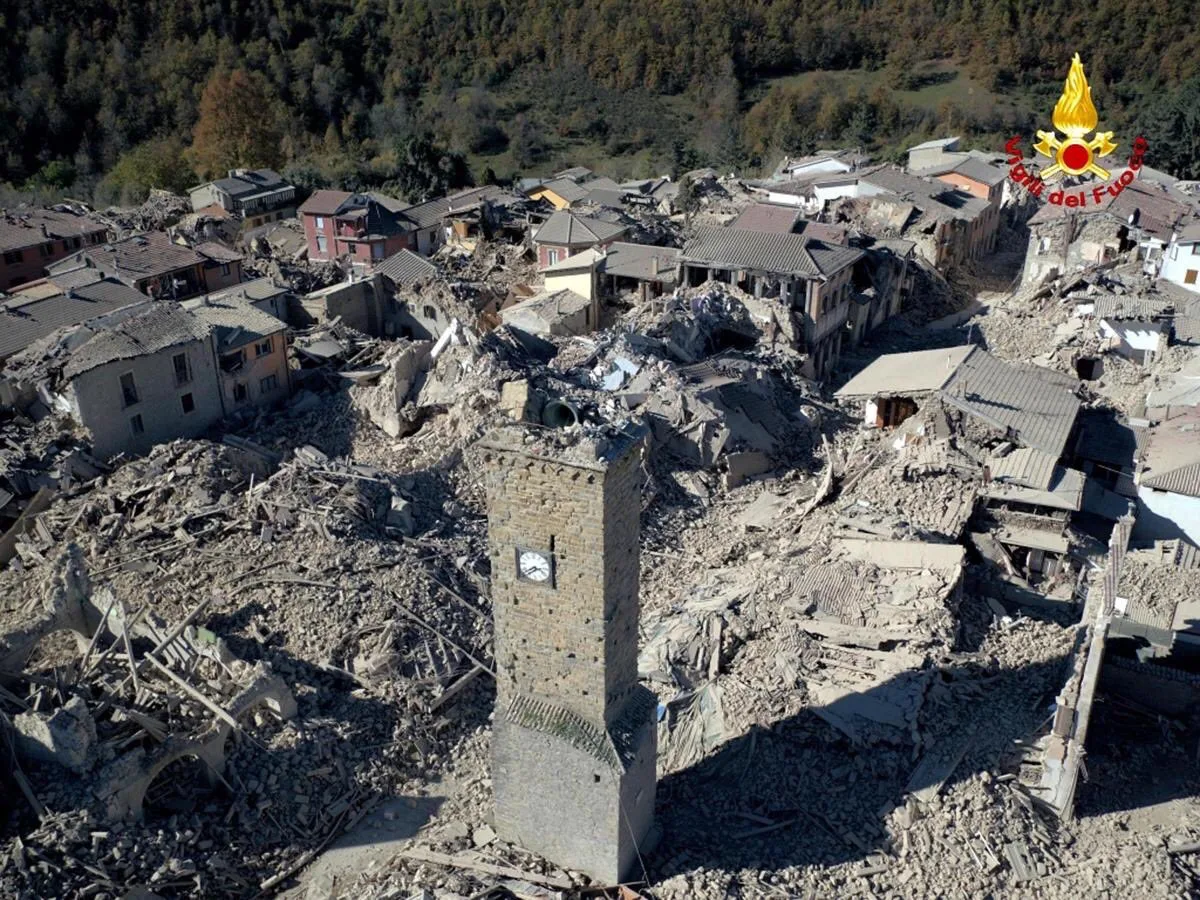
central Italy, Sunday, Oct. 30, 2016. A powerful earthquake rocked the same area of central and southern Italy hit by
quake in August and a pair of aftershocks last week, sending already quake-damaged buildings crumbling after
a week of temblors that have left thousands homeless [Credit: Vigili Del Fuoco/Italian Firefighters via AP]
There were no reports of fatalities — a fact attributed to the evacuation of sensitive areas and fragile city centers. Nearly 8,000 people have been moved to shelters or hotels following the quakes last week and Sunday, and Italy's Civil Protection agency was expecting that number to reach 11,000 by Monday morning. Many who stayed behind were sleeping in campers or other vehicles, out of harm's way.
Renzi vowed to rebuild houses, churches and business, saying, "a piece of Italian identity is at stake at this moment."
"Feeling the earth collapse beneath your feet is not a metaphorical expression but is what happened this morning, and half of Italy felt this," Renzi said.
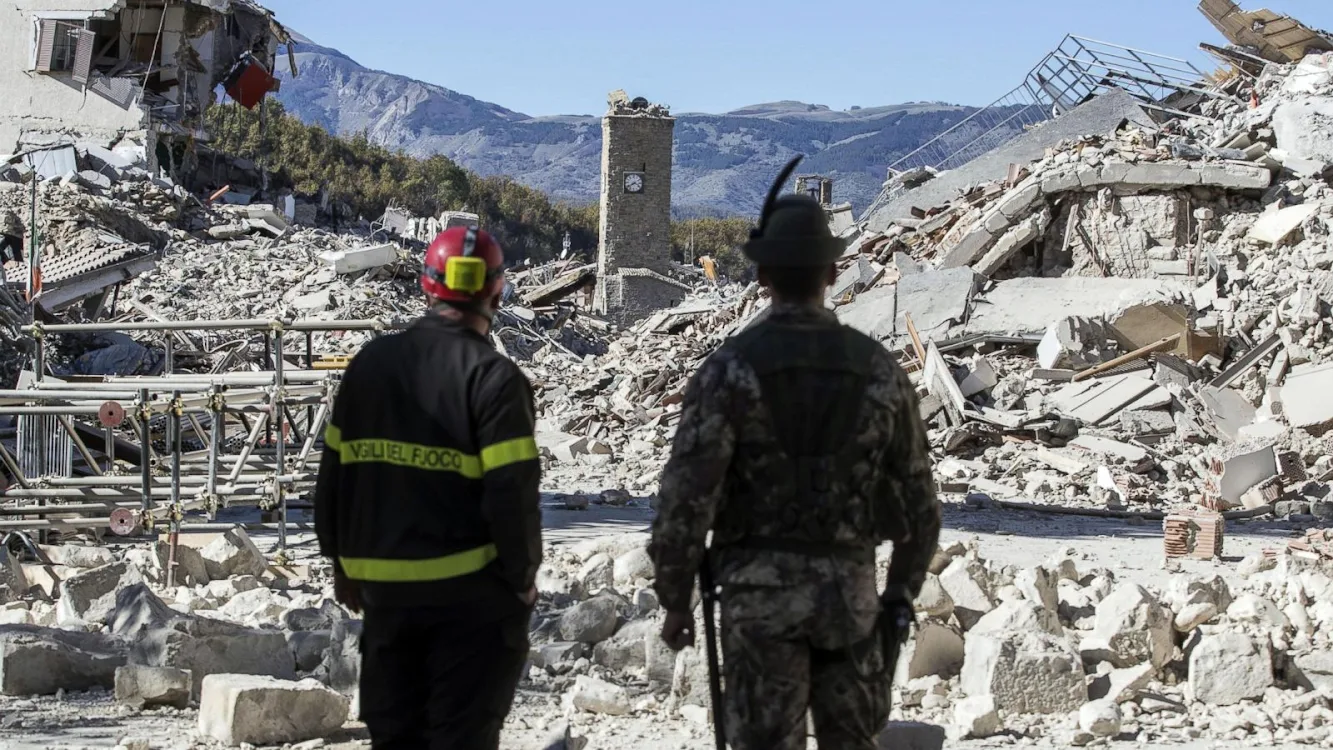
magnitude of 6.6 struck central Italy, Sunday, Oct. 30, 2016. A powerful earthquake rocked the same area of central and
southern Italy hit by quake in August and a pair of aftershocks last week, sending already quake-damaged buildings
crumbling after a week of temblors that have left thousands homeless [Credit: Massimo Percossi/ANSA via AP]
The quake struck another painful blow to the rich artistic heritage of villages that dot the Apennine Mountains.
The worst damage was reported in Norcia, a town in Umbria closest to the epicenter. Two churches were destroyed — the 14th century Basilica of St. Benedict, built on the traditional birthplace of St. Benedict, founder of the Benedictine monastic order; and the Cathedral of St. Mary Argentea, known for its 15th century frescoes. Only the cracked facades were still standing, with most of the structures disintegrating into piles of rubble and dust.
Television images showed nuns rushing into the main piazza as the bell tower appeared on the verge of collapse. Later, nuns and monks knelt in prayer in the main piazza. A firefighter appealed to a priest to help keep residents calm in an effort to prevent them from looking for loved ones.
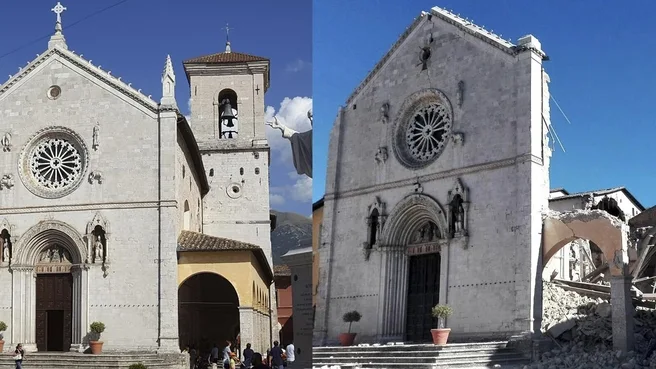
background on Aug. 21, 2016, left, and collapsed after an earthquake on Sunday, Oct. 30, 2016. Another powerful
earthquake shook central Italy on Sunday, sending panicked residents running into piazzas, raining boulders onto
highways and toppling a Benedictine cathedral and other historic edifices that had withstood
several recent quakes [Credit: AP]
When the quake stuck, nuns from the Saint Mary of Peace monastery in Norcia were praying and singing hymns. The shaking caused their building to collapse and badly damaged their sleeping quarters. Later, firefighters escorted them back inside to retrieve holy books. Then an aftershock hit.
"But we had courage, because we were in our house and the Lord protects us," one nun told The Associated Press.
Large sections of Norcia's ancient Roman city walls — which suffered damage and cracks in the previous quakes — crumbled, along with towers.
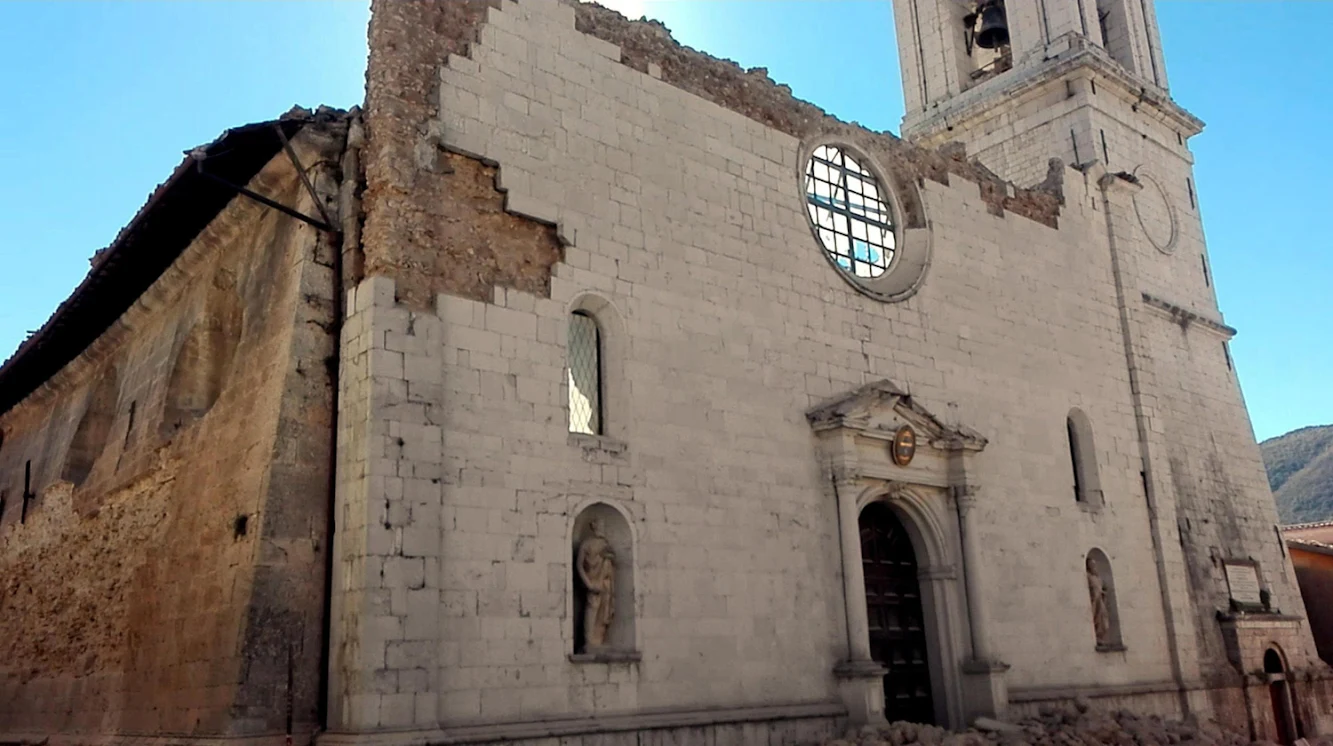
of 6.6 struck central Italy, Sunday, Oct. 30, 2016. Central Italy was hit by another powerful earthquake Sunday, toppling
buildings that had recently withstood other major quakes and sending panicked residents back into the streets,
but causing no immediate loss of life [Credit: Matteo Guidelli/ANSA via AP]
Amatrice, the town that bore the brunt of destruction on Aug. 24, sustained blows to treasures that had withstood the quakes of the past weeks.
The community's medieval bell tower stood tall amid the rubble after the August quake, becoming a symbol of hope and resilience for the stricken population. During a visit to the quake zone earlier this month, the pope prayed alone amid the rubble, the brick tower still standing in the background. But the latest shaking partially collapsed it. The 15th century Church of Sant'Agostino also fell down.
"The monster is still there," Amatrice Mayor Sergio Pirozzi told Sky TG24.
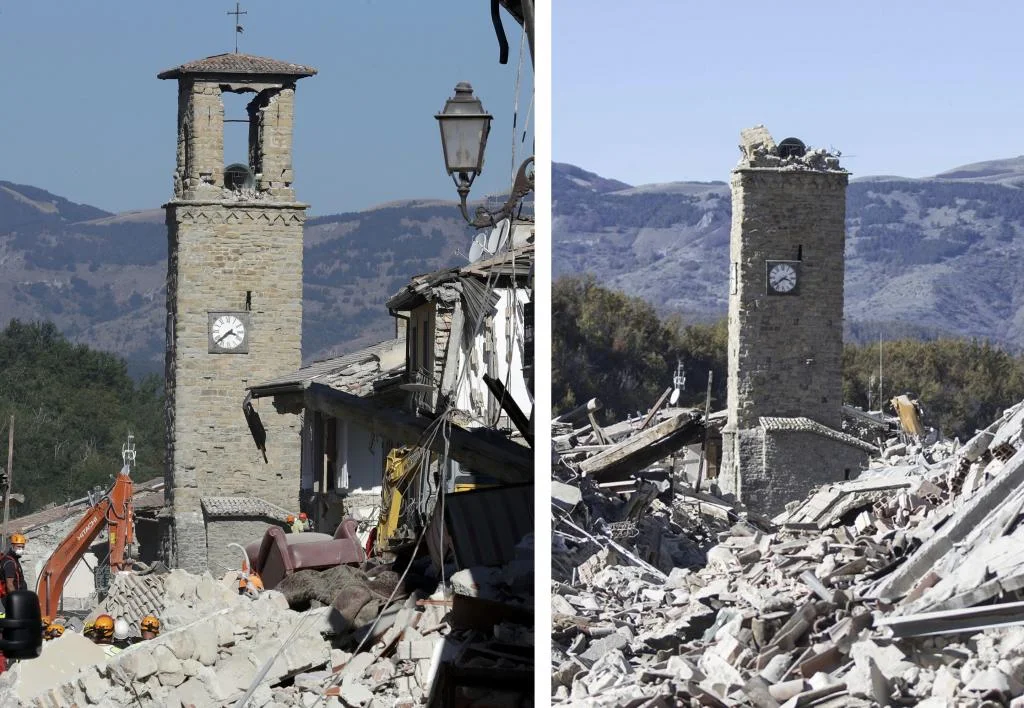
and partially collapsed after the earthquake of Sunday, Oct. 30, 2016. Another powerful earthquake shook Central Italy
on Sunday, sending panicked residents running into piazzas, raining boulders onto highways and toppling a Benedictine
cathedral and other historic edifices that had withstood several recent quakes [Credit: AP]
The quake was felt as far north as Salzburg, Austria, and all the way down the Italian peninsula to the Puglia region, the heel of the boot. In Rome, some 150 kilometers (95 miles) away, people rushed into the streets in pajamas.
The basilica of St. Paul Outside the Walls, a site of Christian worship in Rome since the 4th century, had to be closed for inspections after sustaining cracks and damage to some molding. There were also cracks in the cupola of Sant'Ivo alla Sapienza church in Rome, a baroque masterpiece by Francesco Borromini, an architectural giant of the 17th century.
The quake forced the temporary closure of some of Rome's most important tourist sites, including the presidential palace, so authorities could check for damage.
Authors: Colleen Barry, Vanessa Gera & Gregorio Borgia | Source: Associated Press [October 30, 2016]